Foraging in Ontario - Acorn meal
Acorns have been used as a food since ancient times.
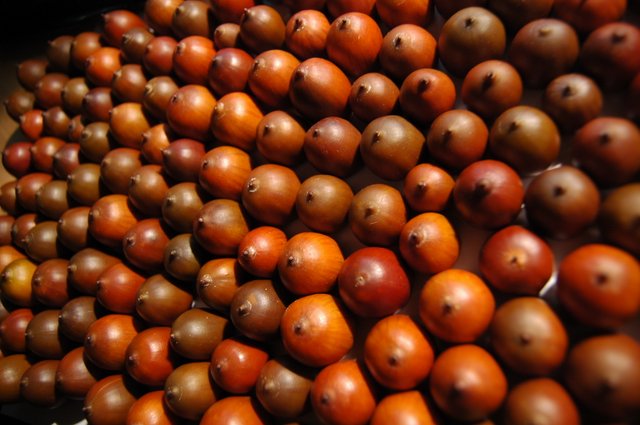
Let's re-discover how they are made edible for human consumption.
We start with understanding the acorn itself. It's the fruit of the oak tree, a seed with a thin shell. Squirrels and chipmunks are important consumers of these abundant nuts. The rodents are unwitting cultivators of oaks, often burying the acorns and causing them to be planted throughout the forest when they forget the location of their cache. You can learn more about the red oak here in my previous article describing the growth habits and form of this tree.
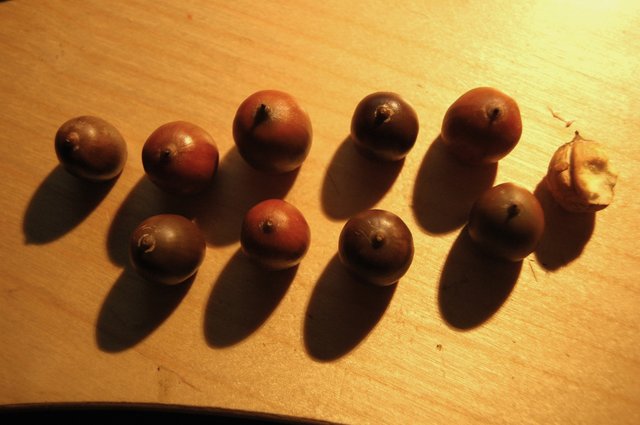
The shell of the red oak acorn is generally very thin and easily cracks off. You are left with all nutmeat and very little else, which makes it more attractive than other nuts such as walnut, hickory and pecan. This makes it easy to collect a large amount and then open them easily. Other nuts are significantly lighter than the shell, whereas acorns are mostly edible material. If you decide to take a bite however, you'll quickly find they aren't immediately edible, some work is required.
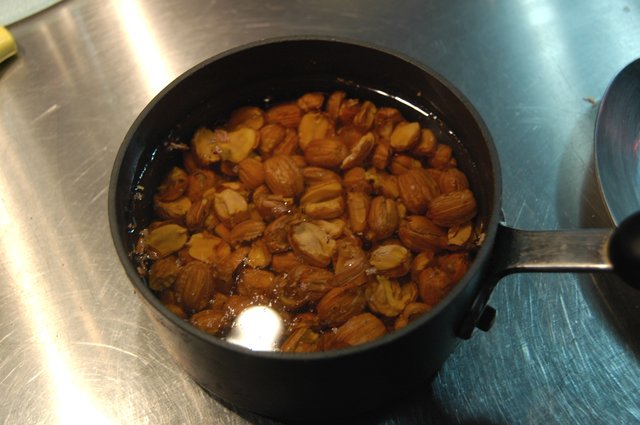
If you read up on the oaks you'll learn that there's hundreds of species loosely grouped into red oaks and white oaks. The difference is that red oaks take longer to grow acorns and are more rich in tannins than white oaks. Tannins are the bitter tasting compounds found in wine, often coming from the oak barrels it sits in. In order to make the red acorns edible they require a fair bit of processing. First step is to soak them in water for a period of time, usually 24 hours. After this, the water is changed and let to sit again.
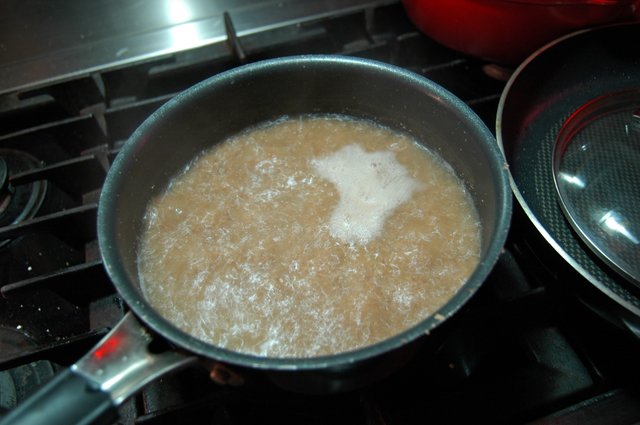
After the soak, the acorns were ground up very finely in a coffee grinder. This increases the surface area available to leach out the tannins, which takes time. One method is to boil the acorns in hot water, effectively dissolving out the tannins quicker and making the taste more acceptable. Often ancient people would place the shelled acorns in a basket in a riverbank, the constant flowing water would leach out the tannins over time.
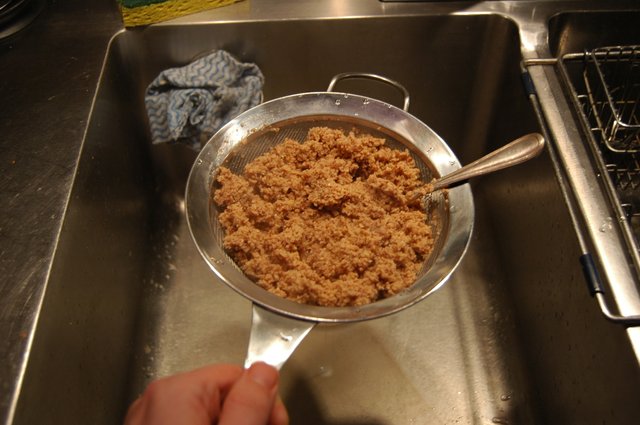
Washing thoroughly with water helps, hot water especially. Acorns can be leached using a cold water method with more time, or a hot water method that takes less time. Remember not to mix them up, if they are placed into cold water after boiling the tannins will get locked in and remain, giving you a bitter acorn meal.
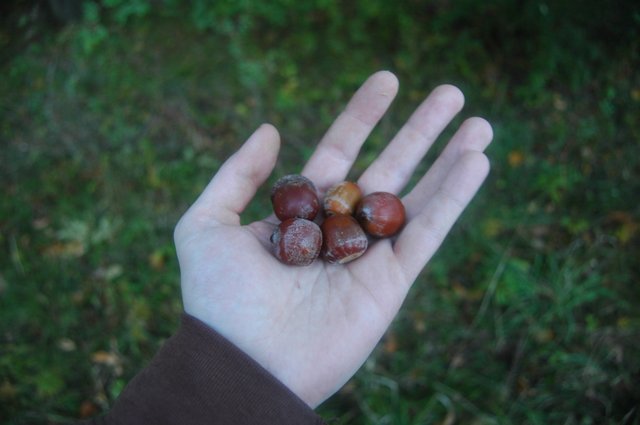
I like a challenge so I used red acorns. They store well and are resistant to rotting. White acorns are much more "sweet", they lack lots of tannins, but should be used the same season. If you find that the taste is too astringent (drying) or bitter, another batch may be required. Some acorns are simply too high in tannins to consume, but most can be eaten after processing.
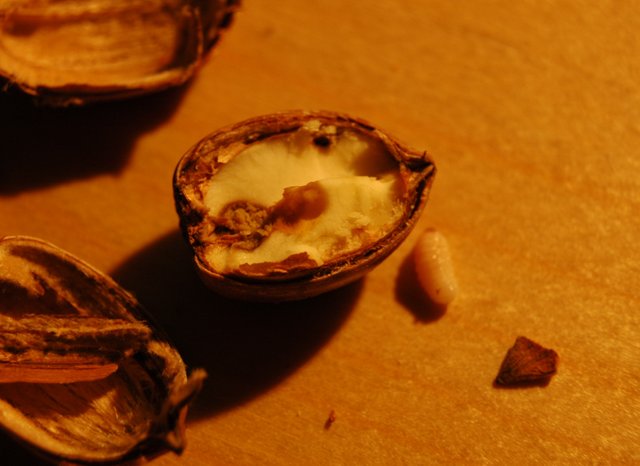
Like all natural foods, you will find that practice is often harder than in theory. One caveat for acorns is much like apples. It's only fair to prepare you ahead of time - now and again, you will find a worm, actually a larvae of acorn weevil in the nuts. Don't let this discourage you - an easy fix is to hang up the bag of acorns somewhere dry and eventually the larvae chews a tiny, circular hole out of the acorns. Another simple idea is the float test, where most diseased acorns are lower density than the rest - good ones will sink and floaters are to be discarded. Or you can just bake your acorns at a low temperature for 30-60 minutes, which usually splits the shell and cooks the weevil.
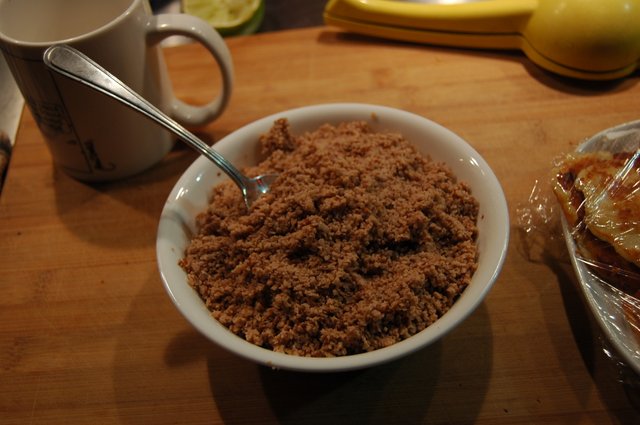
Clearly, acorns are a tough food to prepare properly. However learning to process and leach acorns can be empowering, gaining the ability to make a ubiquitous fall nut into a nutritious meal. This food source has been around since ancient times, and still is eaten in various places around the world like Korea and Japan as a health food. Remember to consult with a local expert when going out to forage your own food, and bon appetit!
All photos were taken by me and are free to share and distribute (CC0)
Hello @seedvault,
Congratulations! Your post has been chosen by the communities of SteemTrail as one of our top picks today.
Also, as a selection for being a top pick today, you have been awarded a TRAIL token for your participation on our innovative platform...STEEM.
Please visit SteemTrail to get instructions on how to claim your TRAIL token today.
If do not wish to be promoted by SteemTrail, please reply with "Stop" to opt out.
Happy TRAIL!

Upvoted by @foraging-trail
Thank you for following and upvoting @foraging-trail
You can find out more about the Steemit Foraging community and guidelines for being upvoted by the @foraging-trail here and here. Join us In the Foraging-Trail and let's discuss Foraging Related Topics
It looks like you have your acorn process down really well! I have always just used cold water. I put the acorns in a blender with cold water, and then blend them with new changes of water, a few times, until the water stays clear. It's quick. My favorite acorns are all in the White Oak group. The Bur Oak (Quercus macrocarpa) has such a huge acorn and it doesn't take much processing. And I have found Chestnut oaks (Quercus montana) that were so sweet, they didn't need any processing at all. But, boy, did I have to fight the squirrels and bluejays for them, lol.
On the @foraging-trail, @bontonstory has a nice post about cooking with Acorn Jelly in Korea. Acorns are real food for regular people! :D It would be nice to see what you are making with your acorns! :D